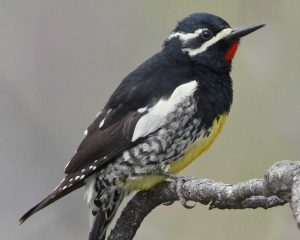Long Hikes, Short Hikes, Birds, and Squirrels

Like many destination resort communities, Jackson Hole has its share of trophy homes, five-star restaurants and Range Rovers. But what makes this place a destination in the first place? Grand Teton National Park, mountains that look like mountains, world class skiing in the winter, abundant wildlife, wild and scenic rivers. And the folks who live here year round really know how to enjoy these amenities. From professional ski bums to recreation enthusiasts, Jackson is full of people who have logged their 10,000 hours in all four seasons. They climb up and ski down our biggest peaks, bike or ski the entire circumference of the valley, run rivers in the morning and run marathons in the afternoon. I know one local gal who, at age 103, still straps on her skis every winter!
Jackson Hole is a land of extremes populated by extreme athletes. But there is plenty of room in this valley for those of us who don’t care to push ourselves quite so hard. Perhaps we’ve allowed our level of fitness to taper slightly as we’ve aged, or we’ve devoted big chunks of time to other pursuits (like kids and commuting.) We might start our outdoor season with a short hike to Taggart Lake. Or a slightly longer walk to Phelps Lake. We put in time on the trails – just not at the Olympic level.
My wife and I usually kick off our summer hiking at Phelps Lake. Phelps Lake is a great place to walk because the trails are well maintained, and there are many opportunities to spot critters. For the last two years, we were lucky enough to find black bears on the trail. This year our wildlife sightings were more diminutive, though no less satisfying. We’re talking three types of squirrel (grey squirrel, chipmunk, and marmot), along with a new bird for our Life List. The bird, a woodpecker, was leaving evenly spaced holes in vertical rows about 18 inches long on the conifer trunks. It was medium sized, black with white specks, a red throat, and a yellowish chest. We managed a blurry photo – enough to narrow the field – and confirmed it with a birdsong recording we found on the Cornell Lab of Ornithology website. Turns out the Williamson’s Sapsucker is an uncommon visitor to our neck of the woods, coming up to the Rockies from its winter home in Mexico for summer breeding season. And climate change might make it even rarer.
Not every walk in the woods will reveal a grizzly, a wolf, or a moose. And not every hike needs to be the fastest or the longest. If you’re like me, and not inclined to score a Personal Best on every outing, don’t beat yourself up. Just take your time, and use these shorter, slower hikes to look closely at the natural world around you. Who knows what you’ll find?




